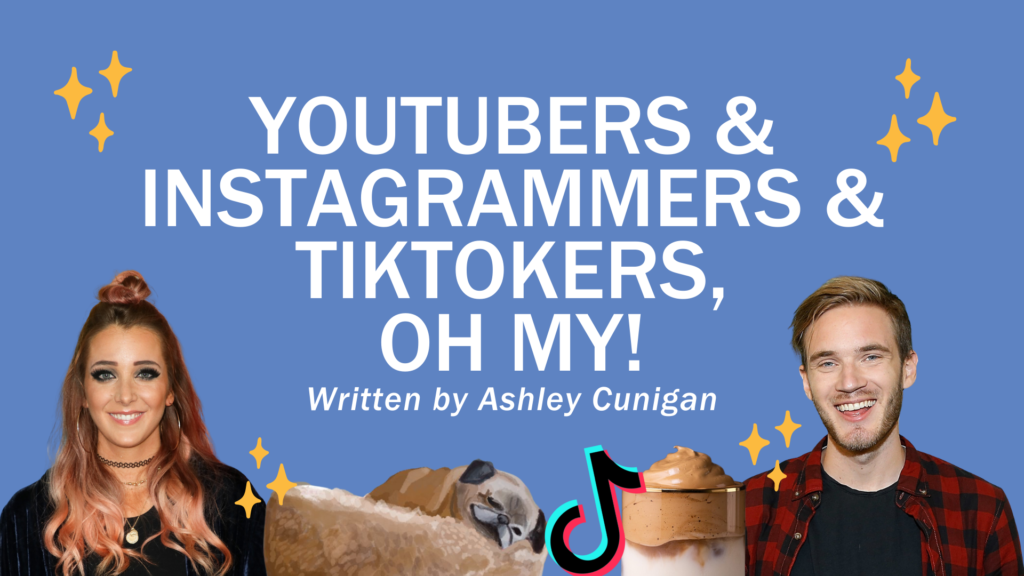YouTubers & Instagrammers & TikTokers, Oh My!

From YouTube to Vine — to now Instagram and TikTok — the ever-changing social media environment continues to shape digital entertainment. No matter where you look, there’s always a platform to watch videos, share GIFs and find the latest updates from your favorite creators. As trends come and go, so do content creators and their potential for real impact.
Founded in 2005, YouTube was one of the first platforms to provide creatives a digital space to upload their own unique content. YouTube’s immediate popularity allowed businesses to optimize their brand awareness by running video advertisements. For example, Nike released an ad featuring Brazilian soccer player Ronaldinho, which was the first video to receive over 1 million views on YouTube. Since then, Google acquired YouTube and redefined its original purpose — “to give everyone a voice and show everyone the world.”
Yet businesses weren’t the only ones to hop on the YouTube bandwagon.
Individuals interested in posting their own creative content had a platform to share their voices. Famous stars such as PewDiePie, Jenna Marbles and Smosh gained large followings from their entertaining, personally curated videos. Over time, these YouTubers were able to make a living through sponsored ads.
When Vine shut down in 2016, YouTube encountered a large shift of viral Viners becoming YouTube stars. To ensure their content was still being seen, Logan and Jake Paul started making videos to increase their views on YouTube. However, as the platform became older, subscribers were less engaged — similar to how Vine lost its craze.
When Facebook acquired Instagram, many creators moved to the photo-sharing app as influencers. Instagram executives recognized the rise of influencer marketing and knew the potential for users to grow their following through sponsored content. While famous athletes and movie stars top the charts for having the largest Instagram following, original YouTube stars such as PewDiePie use the platform to promote their YouTube channels while sharing behind-the-scenes content and merchandise.
Though very similar, YouTubers and influencers have different purposes. YouTubers focus on individual video creation — specifically on the YouTube platform — to grow their digital communities via subscribers. Influencers are able to use all social media platforms to build their personal brands. Their goal is to gain sponsorships so that they may create business-branded content. Instagram and TikTok’s direct marketing efforts allow influencers to increase their following outside of standard YouTube videos. In fact, Instagram has added a specific Creator Account option to differentiate businesses from social influencers.
Due to the rise of new social media networks, it’s hard to say whether these creators will stay popular on one single platform. Even the top YouTubers are struggling to keep their followers engaged because of TikTok’s popularity. TikTokers are reaching a large demographic with even larger consumer impressions. Those who choose to engage with content on YouTube are more likely to be of the older demographic, whereas TikTok is targeting younger audiences through trusted influencer marketing.
As the digital age continues to transform, social media influencers are challenged with which platforms will grow their followers and business opportunities. Whether Instagram, Facebook, YouTube or TikTok, all creators will have to choose which platforms best support their content. Having an influence takes much effort and commitment — one post at a time. Where will these creators flee to next?

Ashley Cunigan is a senior at The University of Alabama and editorial writer for Platform Magazine, an online student-run publication sponsored by The Plank Center for Leadership in Public Relations. She is passionate about community engagement, best practices in the PR industry and keeping up with the latest social media trends.
